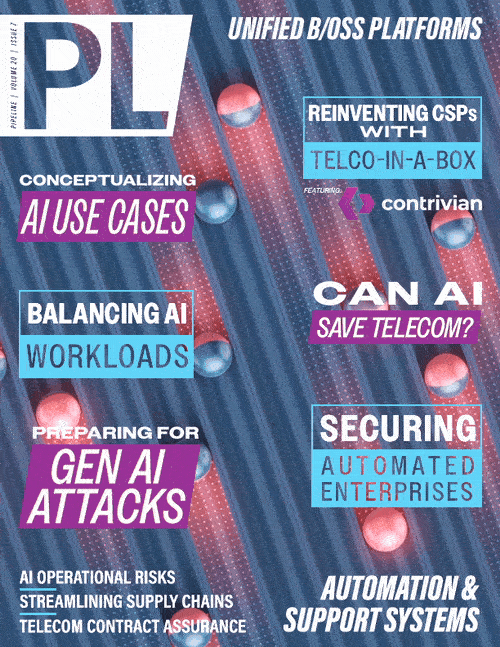Can Generative AI Become the Saviour
of the Telecoms Industry?
million. BT took a very pragmatic view of GenAI, and instead of embracing the concept of a single telco specific LLM as proposed by SK Telecom and Global Telco AI Alliance, very much took a “horses for courses” approach of using multiple LLMs connected via an LLM gateway, citing Anthropic, AWS, Open AI, and Foundry as target LLMs. They certainly didn’t advocate creating their own LLM, as suggested by Ericsson. However, it’s easy to see that BT’s strategy would enable them to use telco specific LLMs when they become available.
BT’s AI vision is ultimately pragmatic. AI is here for three reasons: 1) to get things done, 2) to improve service, and 3) to increase sales.
What I like about BT’s approach is its focus on using AI to do things. They are focused on the use cases supported by the technology rather than taking a more esoteric view of AI for AI’s sake.
Vodafone: AI is so Yesterday!
Vodafone’s Group CTO, Scott Perry, professed that AI is not a future technology, but is something already in use across the Vodafone organization today. He stated that Vodafone currently had over 600 AI use cases and over 200 AI processes active today. This statement very much supports the idea that diagnostic and predictive AI technologies are ubiquitous, even though LLM based GenAI is not as widespread. Scott divided AI into three clearly defined domains: productivity tools; transformational functions; and new business.
Vodafone is actively using AI productivity tools throughout its business operations. They are using various Microsoft Co-pilot tools with Office 365 for activities such as legal contract searches and improving RFP responses. While these may not be the most glamorous use cases, the productivity improvements and time saving can be measured in thousands of hours.
With CX one of the key differentiators for any service provider it isn’t surprising to see Vodafone using AI to transform their customer services operation around the concept of customer care “super agents” who have AI tools to improve experience and reduce time and cost to serve. A similar, DevOps approach is being used with AI to improve software quality within the business.
Interestingly, Scott was more vague concerning the use of LLMs, stating merely that they expected to support more than one LLM for any GenAI tools, functions and use cases. Their vision is for a flexible architecture that allows them to swap between different LLMs based either on use case or what is “best in class.”
Their approach to use of humans within the business very much links to the evolution of the technology and increasing trust in AI over the time. The three models they see are:
- Human in the loop (open loop).
- Human on the loop (semi-closed loop).
- Human out of the loop (closed loop).
For Vodafone, AI is a major business enabler and a technology they are already wholeheartedly embracing.
DT: The AI Future is Magenta and Green
DT’s Global CTO, Abdu Mudesir, also spoke about the fact that AI was already ubiquitous within the company. DT, who is also a key player in the Global Telco AI Alliance, is using AI and machine learning (AI/ML) technologies in three interesting ways: 1) AI-powered customer service, 2) AI-enhanced network rollout, and 3) AI-driven sustainability.
DT currently offers an AI-powered service, “Frag Magenta” (Ask Magenta), to assist customer questions and improve service levels. They are also using AI-enhanced technologies to improve their fiber rollout in Germany, both as a way to improve CX and at the same time reduce the OPEX and TCO for the network. Improving CX, increasing retention and overall customer lifetime value, and OPEX/TCO improvements, have a positive impact on profitability. If successful, these approaches will be copied around the globe.
Possibly the most interesting use of AI by DT, however, is in the “Green Tech” and sustainability space. AI can be used to reduce the power and carbon footprint of telco networks, which already account for 4 percent of global emissions today. Their results from this program are impressive, saving 16 GWh in Germany and 20 GWH in the rest of Europe. Based on today’s energy prices of around 40.70 cents per kilowatt, that saving in Germany is worth around €6.4 million. With high global energy prices this type of AI use case can provide huge savings for CSPs.



















